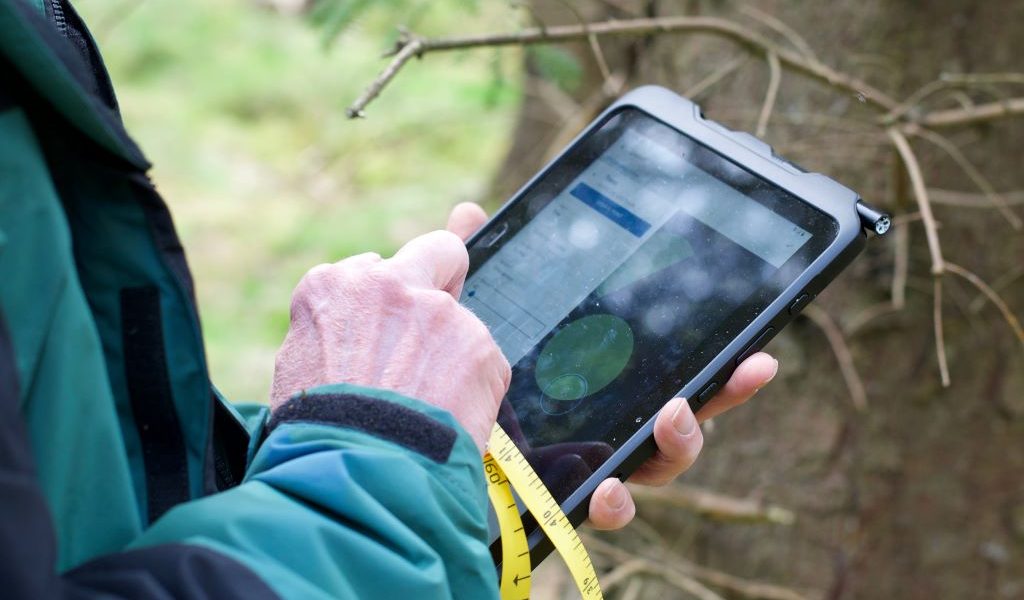Field Data Services
Field Data Services brings together highly skilled and valued staff from the previous teams of Technical Services Unit (TSU), Technical Development Branch (TDB), and the National Forest Inventory Quality Assurance (NFI QA).
We use some essential cookies to make this website work.
We’d like to set additional cookies to understand how you use forestresearch.gov.uk, remember your settings and improve our services.
We also use cookies set by other sites to help us deliver content from their services.
Field Data Services brings together highly skilled and valued staff from the previous teams of Technical Services Unit (TSU), Technical Development Branch (TDB), and the National Forest Inventory Quality Assurance (NFI QA).

Field Data Services sits within the Centre for Inventory, Forecasting and Operational Support (IFOS) and brings together highly skilled and valued staff from the previous teams of Technical Services Unit (TSU), Technical Development Branch (TDB), and the National Forest Inventory Quality Assurance (NFI QA).
A list of all literature available (updated to December 2015) about Dothistroma in alphabetical order (G-L)
Information on successful planting practice of species in urban greenspace projects and the constraints to planting
Summary of Programme Trees, woods and forests provide multiple benefits to society and many of these are recognised in the forestry and woodland strategies spanning the next 25-50 years. In particular, there are benefits to the environment through climate change mitigation and adaptation, air quality improvement, protecting water quality and...
Woodland ecosystems are integral to our health, well-being, security and economy, but they face a number of pressures including climate change, land-use intensification, and emerging pests and diseases. This Research Note explores the links between biodiversity, measured at different levels of organisation (genes, species and communities), and the ability of...
Information, management advice and guidance on ramorum disease of forest trees and plants, and its causal agent, Phytophthora ramorum. Also known as sudden oak death, sudden larch death and larch tree disease
B4EST will offer new understanding about how adaptive forest breeding can be used to increase forest survival, health, resilience and productivity under climate change and natural disturbances, while maintaining genetic diversity and key ecological functions.
UK distribution of Phytophthora ramorum evolutionary types provided by new testing method. By developing a new molecular-based testing method based on PCR techniques, Forest Research scientists have been able to examine the distribution of the two main lineages of Phytophthora ramorum responsible for the major epidemic on larch (Larix spp.)...
My name is Pankajini Samal and I work as a research assistant in the pathology department at Forest Research (FR). I joined in August 2023 from India, so I’m still very new to FR. My job focuses on the use of molecular biology techniques for managing tree disease. I currently...
Issues and practical considerations of habitat fragmentation caused by the provision of urban greenspace
Summary of Programme The importance of pests and diseases associated with forest and woodlands in the UK has never been greater, with highly damaging outbreaks, evidence of greater spread and impact, new organisms being introduced through trade pathways, and established pest threats exacerbated by changes in climate and host availability....
Present in United Kingdom Reportable – see ’Report a sighting’ below Scientific name of causal agent – Hymenoscyphus fraxineus Ash dieback is a highly destructive disease of ash trees (Fraxinus species), especially the United Kingdom’s native ash species, common ash (Fraxinus excelsior). It is caused by a fungus named Hymenoscyphus...
Cookies are files saved on your phone, tablet or computer when you visit a website.
We use cookies to store information about how you use the dwi.gov.uk website, such as the pages you visit.
Find out more about cookies on forestresearch.gov.uk
We use 3 types of cookie. You can choose which cookies you're happy for us to use.
These essential cookies do things like remember your progress through a form. They always need to be on.
We use Google Analytics to measure how you use the website so we can improve it based on user needs. Google Analytics sets cookies that store anonymised information about: how you got to the site the pages you visit on forestresearch.gov.uk and how long you spend on each page what you click on while you're visiting the site
Some forestresearch.gov.uk pages may contain content from other sites, like YouTube or Flickr, which may set their own cookies. These sites are sometimes called ‘third party’ services. This tells us how many people are seeing the content and whether it’s useful.